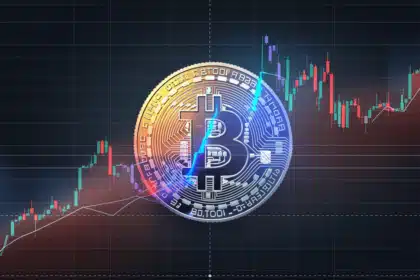According to news sources, U.S. President Donald Trump has reportedly suggested a potential tariff relief on China. The announcement comes at a time when financial markets are seeking clarity, with the cryptocurrency sector in particular closely watching macroeconomic developments. During a recent press engagement, he stated,
“I don’t want them to go higher because at a certain point you make it where people don’t buy,” as reported by Reuters.
This might be termed as an acknowledgment that steep tariffs can backfire by dampening consumer demand.
How Tariff Relief on China Could Boost Crypto Markets
A formal tariff relief on China could carry sweeping implications for the cryptocurrency market. Reduced tariffs may lower input costs, ease supply chain disruptions, and reinvigorate global liquidity; three factors that have historically benefited risk-on assets like Bitcoin.
The crypto market, long sensitive to monetary and fiscal shifts, could interpret any confirmed tariff rollback as a positive trigger. If realized, this form of tariff relief on China could help stimulate renewed inflows into digital assets, with Ethereum, Solana, and BNB among those likely to benefit from stronger investor sentiment.

The Crypto Sector’s View: Tariff Relief on China as a Bullish Catalyst
Within the digital asset ecosystem, macro-level developments like tariff relief on China are increasingly being used as signals for strategic entry and exit points. Traders and funds alike are evaluating political rhetoric as a reflection of future liquidity conditions. Since cryptocurrencies operate globally and outside the purview of national monetary policy, they react sharply to events that influence capital flows.
A de-escalation of the U.S.–China tariff war could reduce systemic stress and support bullish cycles across Bitcoin and altcoins. In short, tariff relief on China might be an important macro tailwind in the crypto space this quarter.
Uncertainty Remains Despite Talk of Tariff Relief on China
Although Trump’s comments have sparked optimism, there is no formal guarantee that tariff relief on China will be implemented. Political volatility, policy inconsistency, and broader geopolitical risks remain considerable headwinds. The U.S.–China relationship spans far beyond trade. Tech sanctions, security disputes, and ideological differences could reintroduce market stress even if tariffs are paused.
Additionally, crypto markets are grappling with their own regulatory overhang, meaning investors should cautiously weigh the impact of tariff relief on China in relation to broader market narratives.
Tariff Relief on China: Impacts Beyond Traditional Finance
For institutional players and retail investors alike, tariff relief on China is more than just a geopolitical footnote. It touches core themes like inflation, currency strength, and investment diversification. If the U.S. relaxes its trade posture, the resulting price normalization in consumer goods could bolster spending and improve earnings, two factors that traditionally increase appetite for alternative assets, including cryptocurrencies.
Moreover, if Chinese capital flows are freed up through better trade terms, crypto could benefit from fresh liquidity out of Asia. Thus, tariff relief on China isn’t just about trade, it’s a crypto-relevant macro catalyst.

Conclusion: Could Tariff Relief on China Spark a Relief Rally?
As markets interpret Trump’s statements, the recurring theme is cautious optimism. While tariff relief on China is not yet a confirmed policy, the language itself has injected confidence into risk markets, especially crypto. Bitcoin, which thrives in environments of expanding liquidity and risk appetite, may soon reflect this optimism if further clarity is provided.
However, traders and investors must remain alert to the complexities of international relations. In the coming weeks, formal announcements or policy proposals regarding tariff relief on China will be closely watched as a barometer for global market sentiment and digital asset momentum.
FAQs
What is tariff relief on China, and why is it important?
The China Tariff relief refers to a reduction or removal of trade tariffs imposed on Chinese goods by the U.S. government. This move can reduce inflation, improve supply chains, and stimulate global economic activity—factors that often benefit cryptocurrencies.
How could tariff relief on China affect Bitcoin and other cryptocurrencies?
By improving global market sentiment and liquidity, tariff relief on China can boost demand for cryptocurrencies like Bitcoin and Ethereum, acting as a bullish macro catalyst.
Is tariff relief on China confirmed policy or just speculation?
As of now, it remains speculative. Trump’s recent comments suggest a softer stance, but no official rollback has been announced yet.
Should crypto traders act now based on Trump’s tariff comments?
While promising, traders should remain cautious until official policy is confirmed. Tariff relief on China could be a strong indicator, but other factors like regulation and interest rates still play key roles.
Glossary
Tariff Relief – The rollback or reduction of import taxes imposed between nations, often done to ease trade tensions and stimulate economic growth.
Crypto Market Sentiment – The prevailing mood or tone of cryptocurrency investors and traders, often influenced by news, macro events, and social media trends.
Risk-On Assets – Investments like stocks and cryptocurrencies that typically perform well when investors are optimistic about economic conditions.
Macroeconomic Uncertainty – Market volatility or unpredictability caused by global economic conditions, policy changes, or geopolitical tensions.
Bitcoin as a Hedge – The use of Bitcoin and similar assets as protection against inflation, fiat devaluation, or systemic financial risk.





























